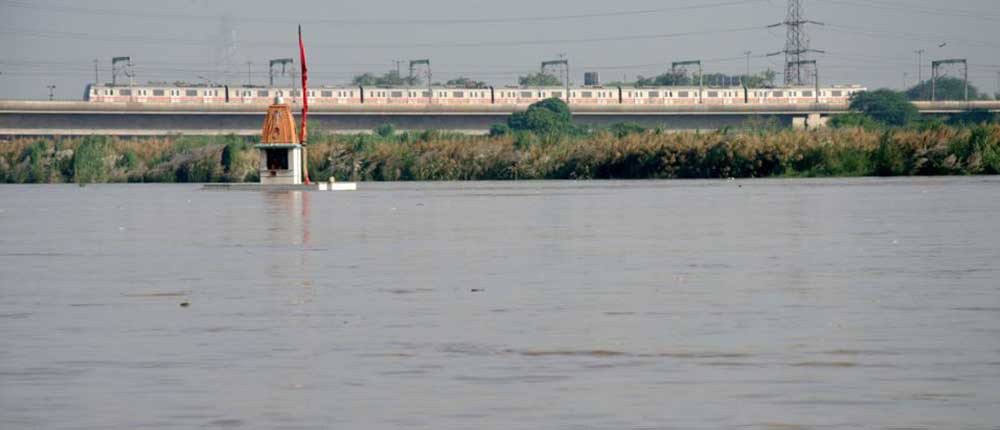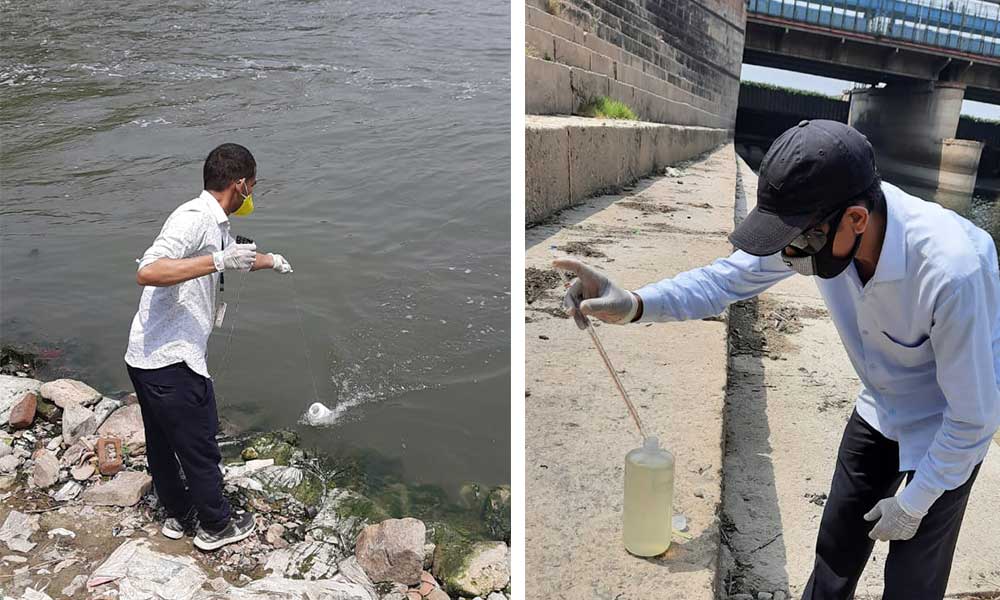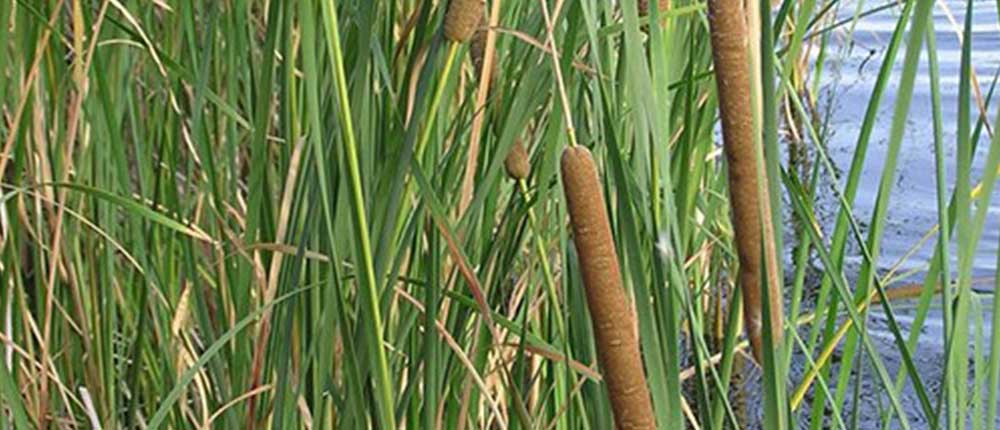During COVID-19 lockdown, a study was conducted by TERI to observe the metals/heavy metal concentration in the Yamuna River.

The water samples from the river were collected in May 2020 during the lockdown period from five different locations (Wazirabad barrage, Nigambodhghat, ITO barrage, Nizamuddin bridge, and Okhla barrage) across the 22 km downstream stretch of the river in Delhi. These water samples were analysed using the inductively coupled plasma mass spectrometry (ICP-MS) technique that measures elements in fluids at trace levels.

The following key observations were noted:
-
Heavy metals such as chromium (Cr), nickel (Ni), copper (Cu), zinc (Zn), arsenic (As), cadmium (Cd), lead (Pb) and mercury (Hg) were found below the limit of quantification (BLQ) as shown in Table 1. It is important to note that these heavy metals (except Cd) were reported in elevated concentrations in the earlier study conducted by TERI (Sehgal et al., 2012) (refer to Table 1). High levels of these heavy metals in Yamuna river water were also reported by Bhardwaj et al. (2017. This clearly shows the effect of lockdown on the heavy metal levels in the water of Yamuna. The closure of industrial activities (point source) and diffuse discharge (non-point source) across the Yamuna river bank might have prevented the industrial discharge in the Yamuna water, thereby the addition of heavy metals in the Yamuna river water.
Table 1 - Levels of heavy metals in Yamuna river water in Delhi
Sr. No.Heavy metal tested Present study results (mg/l)* Earlier studies Acceptable limit Permissible limit (as per IS:10500) Sehgal et al. (2012) Bhardwaj et al. (2017)* 1 Chromium <0.005 0.976±0.622 0.363±0.674 0.05 No Relaxation 2 Nickel <0.005 0.064±0.034 0.851±955 0.02 No Relaxation 3 Copper <0.005 0.091±0.157 4.791±4.776 0.05 1.5 Max. 4 Zinc <0.01 0.191±0.21 3.518±7.257 5 15 Max. 5 Arsenic <0.005 0.012±0.012 Not reported 0.01 0.05 Max. 6 Cadmium <0.001 BDL (<0.005) 0.110±0.146 0.003 No Relaxation 7 Lead <0.005 0.202±0.225 0.255±0.363 0.01 No Relaxation 8 Mercury <0.0001 0.207 Not reported 0.001 No Relaxation - The manganese (Mn) and iron (Fe) concentrations in the river water get lowered as we moved downstream from the Wazirabad barrage (entry point of Yamuna in Delhi) to Okhla barrage (exit point of Yamuna in Delhi). At the entry point, both Mn and Fe had the highest concentration in the river water which were above the permissible limit (0.3 mg/l), however, as we moved downstream, Mn was measured below the permissible limit while Fe was found to be above the permissible limit in river water at all the five sampling points. These two metals were consistently found at all thirteen sampling points in our earlier monitoring studies (Sehgal et al., 2012), however, such decreasing trend in the concentrations of Mn and Fe was not observed which indicates that no point and diffuse source effluent entered into the river during lockdown period. The source of Fe and Mn in Yamuna river water can be geogenic (natural) as well as anthropogenic in normal days, however, high levels of iron during lockdown showed the major contributors are geogenic factors like the interaction of iron-bearing mineral with the groundwater (Sarkar and Shekhar, 2018)[i].
Our recommendations
The COVID-19 lockdown period has provided a rare opportunity to monitor the baseline pollution levels (e.g. heavy metal) in Yamuna river water. The most common heavy metals in the effluent are arsenic, cadmium, chromium, copper, lead, nickel, and zinc, all of which cause risks for human health and the environment (Lambert et al., 2000)[ii]. Arsenic, cadmium, lead, and mercury play no role in human body metabolism and are toxic. Their high concentration causes acute toxicity which is easy to observe thus regulate. Exposures of trace concentration of heavy metals through water and food over the years cause chronic diseases which are very difficult to monitor and regulate the progression of diseases in the population.
As discussed above, at least seven heavy metal levels have gone below the detection. Thus, the addition of effluent contained with heavy metals during normal period is a reality. Therefore, steps must be taken to control the heavy metal pollution in the Yamuna river.
- Regular audit of effluent treatment plants under operation in Delhi is highly recommended to ensure their proper functioning. This will lead to the control of point source addition of heavy metal in the Yamuna river water.
- Development of natural treatment systems (such as constructed wetlands with wild plant species having high heavy metal accumulating potential) near the effluent entry point has the great potential to lower the addition heavy metal into the Yamuna river water.
- Some wild plants, especially bullrush plant (Typha angustifolia, refer to Figure 2) grows rapidly in marshy land and have remarkable heavy metal uptake potential (Demırezen and Aksoy, 2004, Muhammad et al. 2009, Bah et al. 2011)[iii][iv][v]. Such plants can be grown along the Yamuna river bank to reduce the heavy metal addition to river water via diffuse sources (O'Geen et al., 2010)[vi] such as agricultural runoff (a major contributor of heavy metals in agricultural soil is inorganic fertilizers that also include liming, irrigation waters, and sewage sludge (Srivastava et al., 2017)[vii]). However, the major contributor of heavy metals in Yamuna river water is industrial discharge and that should be the prime focus. Additionally, the bulrush plant along the riverbank provides good habitat for the birds thus enhance the biodiversity and beautification of the riverbank.

Footnotes:
[i] https://doi.org/10.1016/j.gsd.2017.12.011
[ii] Lambert M, Leven BA, Green RM. New methods of cleaning up heavy metal in soils and water; Environmental science and technology briefs for citizens; Manhattan, KS: Kansas State University; 2000.
[iii] https://doi.org/10.1016/j.chemosphere.2004.04.011
[iv] https://doi.org/10.1080/15226510902717580
[v] https://doi.org/10.1007/s12011-010-8746-6
[vi] https://doi.org/10.1016/S0065-2113(10)08001-6
[vii] https://doi.org/10.3389/fenvs.2017.00064
